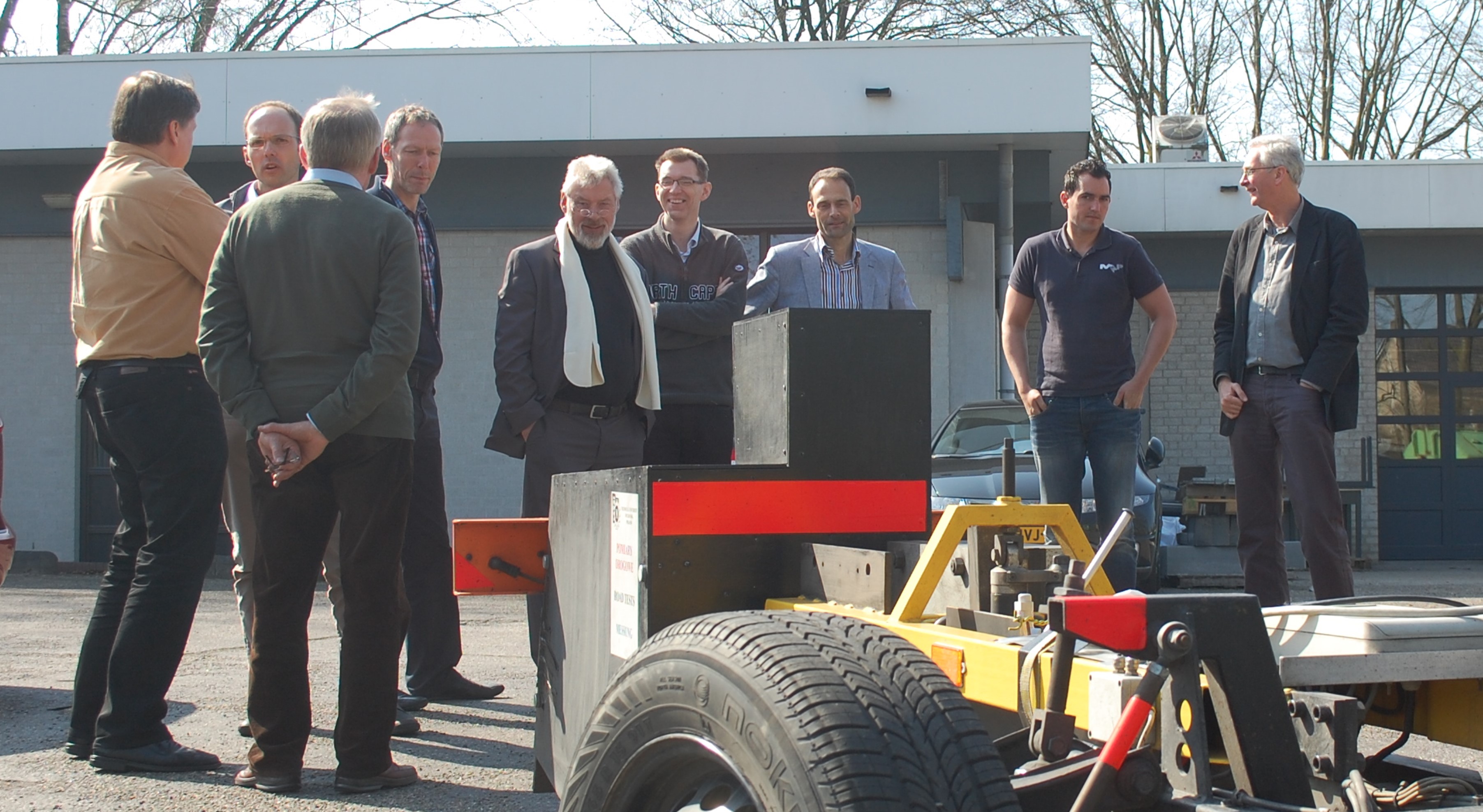Rolling resistance and other energy guzzlers on the road
In layman’s terms, what does rolling resistance mean? “Take for example, the difference between cycling through loose sand and on a smooth asphalt road. The former takes more energy than the latter”, senior advisor Christiaan Tollenaar begins his explanation. With 15 years of experience at M+P, rolling resistance is just one of his areas of expertise. “Of course, our measurements of various types of road surface offer much smaller differences than the previous example. But because of the combined number of cars that drive many kilometres, you can save a lot of energy if the rolling resistance can be lowered, even if only by a small amount. Every stone, hole, bump and slope counts. Developed with a team of colleagues, we now have a unique and widely applicable measuring system.”
Less energy loss, so fewer CO2 emissions
Energy savings on the road lead to obvious savings in your fuel tank or in your battery life. During the 1973 oil crisis, people became interested in investigating how more fuel could be saved. Since 1986, M+P has been involved in research into the energy loss caused by rolling resistance. “We have been carrying out measurements on behalf of the Ministry of Housing, Spatial Planning and the Environment since 1997. And we have developed our own measuring instrument for this,” says senior advisor Erik de Graaff. He has been following this closely since 1993. “Road builders are actually very happy to use our measurements to demonstrate objectively how their increasingly innovative asphalt reduces rolling resistance and thus also energy consumption. And – just as important considering the current climate crisis – this also ensures considerably fewer CO2 emissions. Of course, the production and construction of a road surface are important, but you also have to think about the in-use phase of the road. And this is a message we certainly like to propagate.”
Energy consumption is also influenced by what's around the road
Christiaan explains: “We now have a special measuring vehicle with dozens of sensors. This means the rolling resistance measurements can be corrected for wind and speed. And measuring the wind yields much more useful data. For example, the energy loss caused by a crosswind, which is especially relevant for freight traffic. We can even measure how planting shrubbery next to roads can reduce the influence of crosswinds. In other words: in addition to reducing rolling resistance, there are other ways to save energy. It is very satisfying to be able to provide objective insight into these effects by taking measurements, and to know that our advice makes a serious contribution to sustainability and the quality of the living environment”.

We’ve known about it for a long time, and the technology is quickly catching up
The measurements taken by M+P have provided huge amounts of information for a long time. Unfortunately, the analysis tools to process that data have only been around for about 10 years. 5 years ago, we developed a custom measuring system, and we programmed analysis tools to accurately assign the energy loss of the measuring vehicle to sub-factors such as road surface, side wind guidance, driving behaviour, etc. Colleague and advisor Erik van Gils adds: “We have understood the theory for a long time, and we now have the technical possibilities to realise the measurement system and the analysis scripts. When it works well, it’s amazing.”
